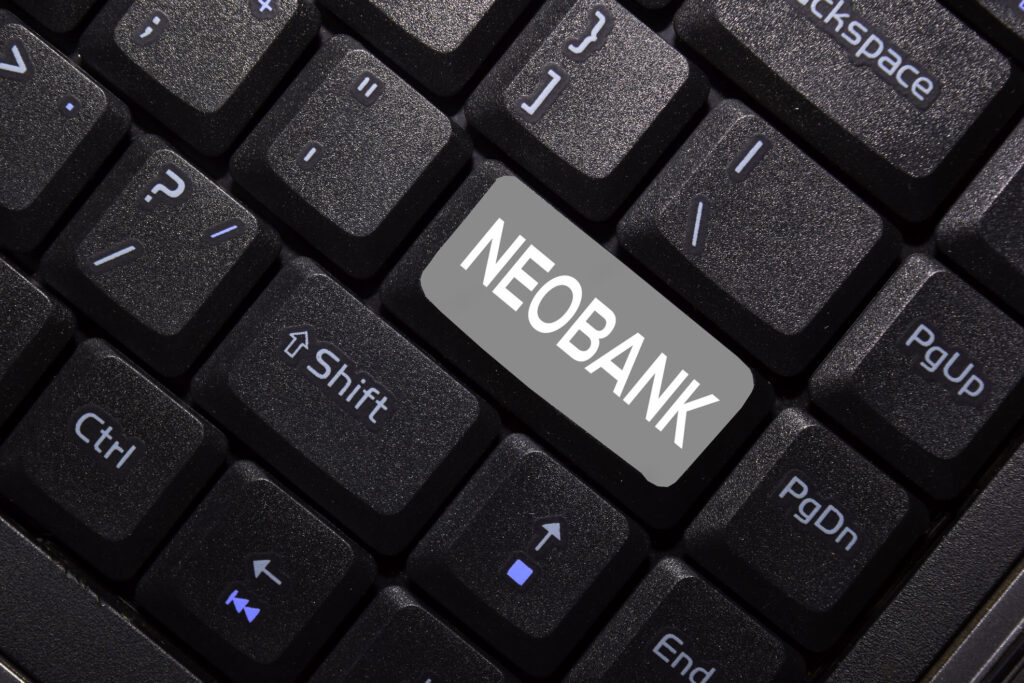
By alphacardprocess May 2, 2024
In today’s digital age, traditional banking is being challenged by the emergence of neobanks. Neobanks, also known as digital banks or challenger banks, are financial institutions that operate exclusively online, without any physical branches. They offer a range of banking services through mobile applications and web platforms, providing customers with a convenient and user-friendly banking experience. In this article, we will explore the concept of neobanks, their key characteristics, and their impact on the financial industry.
Defining Neobanks and their Role in the Financial Industry
Neobanks can be defined as digital-only banks that leverage technology to provide innovative and customer-centric financial services. Unlike traditional banks, neobanks do not have physical branches and rely solely on digital channels to interact with their customers. They offer a wide range of banking services, including checking and savings accounts, loans, payments, and money transfers.
The origins of neobanking can be traced between 2013-15 when a wave of fintech startups began challenging the traditional banking model. These startups aimed to disrupt the industry by offering more accessible and affordable financial services to consumers. Over the years, neobanks have gained significant traction and have become a force to be reckoned with in the financial industry.
Understanding the Disruptive Nature of Neobanks in Traditional Banking
Neobanks have disrupted the traditional banking industry in several ways. Firstly, they have introduced a new level of convenience and accessibility to banking services. With neobanks, customers can open an account, manage their finances, and make transactions from the comfort of their homes, using their smartphones or computers. This has eliminated the need for physical visits to bank branches and has made banking more accessible to a wider range of customers.
Secondly, neobanks have challenged the traditional banking model by offering more competitive and transparent pricing. Traditional banks often charge high fees for services such as overdrafts, foreign transactions, and account maintenance. Neobanks, on the other hand, have lower overhead costs and can pass on these savings to their customers in the form of lower fees and better interest rates.
Lastly, neobanks have revolutionized the customer experience in banking. Traditional banks are often criticized for their slow and bureaucratic processes, long waiting times, and lack of personalized services. Neobanks, on the other hand, leverage technology to provide a seamless and personalized banking experience. They use data analytics and artificial intelligence to understand their customers’ needs and preferences, offering tailored financial solutions and personalized recommendations.
What Makes a Bank a Neobank? Key Characteristics and Features
There are several key characteristics and features that distinguish neobanks from traditional banks. Firstly, neobanks operate exclusively online and do not have physical branches. This allows them to reduce their operating costs significantly and offer more competitive pricing to their customers.
Secondly, neobanks are technology-driven. They leverage cutting-edge technologies such as artificial intelligence, machine learning, and data analytics to provide innovative and personalized financial services. These technologies enable neobanks to analyze customer data, identify patterns and trends, and offer tailored financial solutions.
Another key characteristic of neobanks is their customer-centric approach. Neobanks prioritize the customer experience and aim to provide a seamless and user-friendly banking experience. They offer intuitive mobile applications and web platforms that are easy to navigate and provide real-time access to financial information.
How Do Neobanks Make Money?
Neobanks, also known as digital banks or online-only banks, have reshaped the banking landscape by offering streamlined, user-friendly financial services through mobile apps and websites. Unlike traditional banks, they usually lack physical branches, which significantly cuts down their overhead costs. This allows them to offer products with lower fees or no fees at all. But this leads to a natural question: how do neobanks sustain their business and make money? Here’s a detailed look at their revenue models.
1. Interchange Fees
One of the primary sources of income for neobanks comes from interchange fees. Every time a customer uses a debit or credit card issued by the neobank for transactions, the merchant pays a small fee. A portion of this fee, known as the interchange fee, is passed on to the neobank. This fee generally ranges from 1% to 2% of the transaction amount. Since these fees accumulate over millions of transactions, they represent a significant revenue stream.
2. Premium Account Fees
While basic accounts may be free, many neobanks offer premium accounts that include additional features, such as higher withdrawal limits, international medical insurance, or better exchange rates for a monthly or annual fee. This tiered service model allows customers to choose services that suit their needs and provides neobanks with a steady income from account fees.
3. Lending
Lending is another major avenue for generating revenue. Neobanks offer personal loans, overdrafts, and sometimes mortgages. The interest that customers pay on these loans is a critical revenue source. By leveraging technology to assess creditworthiness, neobanks can offer competitive rates while managing risk effectively.
4. Third-Party Partnerships
Neobanks often partner with other financial service providers to offer a range of products, such as insurance, investment products, and retirement accounts. These partnerships allow neobanks to provide a more comprehensive suite of services. In return, they earn commission fees or a share of the revenue generated from these services.
5. Foreign Exchange Services
For neobanks that offer multi-currency accounts or international spending capabilities, foreign exchange services are a lucrative revenue channel. They earn money on the spread between the buying and selling price of the currencies. Although each transaction might involve only a small margin, the volume of such transactions can be quite high, especially for neobanks with a globally mobile customer base.
6. Treasury Operations
Neobanks invest the money deposited by customers in various short-term financial instruments or loans. The interest and returns generated from these investments contribute to their income. This aspect of their operation is closely regulated to ensure safety and liquidity of the deposits.
7. Technology and Data Services
Some neobanks leverage the vast amounts of data they gather to improve financial models or offer insights to third parties. While not a primary revenue stream for all neobanks, it is an emerging area that holds potential for additional income through technology and data analytics services.
Neobanks vs. Online Banks: Key Differences and Similarities

While neobanks and online banks both operate digitally, there are some key differences between the two. Online banks are traditional banks that have a digital presence and offer online banking services alongside their physical branches. Neobanks, on the other hand, are digital-only banks that do not have any physical branches.
In terms of services offered, neobanks and online banks are quite similar. Both types of banks offer a range of banking services, including checking and savings accounts, loans, payments, and money transfers. However, neobanks often differentiate themselves by offering more innovative and user-friendly features, such as budgeting tools, spending analytics, and personalized financial recommendations.
Technologically, neobanks and online banks also differ. Neobanks are known for their use of cutting-edge technologies, such as artificial intelligence and machine learning, to provide personalized financial services. Online banks, on the other hand, may not be as technologically advanced and may rely on more traditional banking systems.
In terms of customer experience, neobanks and online banks both aim to provide a convenient and user-friendly banking experience. However, neobanks often excel in this area due to their focus on digital innovation and customer-centric design.
The Rise of Neobanks: Exploring the Global Neobanking Landscape
The neobanking industry has experienced significant growth in recent years, with neobanks gaining popularity around the world. According to a report by Accenture, the global neobanking market is expected to reach a value of $334.4 billion by 2026, growing at a CAGR of 46.5% from 2019 to 2026.
Several key players have emerged in the neobanking industry, each with its unique offerings and business models. Some of the most popular neobanks include Revolut, N26, Monzo, Chime, and Varo Money. These neobanks have attracted millions of customers worldwide and have raised billions of dollars in funding.
However, neobanks also face regulatory challenges in different countries. As they operate exclusively online and do not have physical branches, neobanks need to comply with various regulations related to customer identification, anti-money laundering, and data protection. These regulations can vary from country to country, making it challenging for neobanks to expand globally.
Popular Neobanks: A Closer Look at Leading Players in the Industry

Revolut is one of the leading neobanks globally, with over 15 million customers. It offers a range of financial services, including multi-currency accounts, international money transfers, and cryptocurrency trading. Revolut has gained popularity for its competitive exchange rates and low fees, making it a popular choice for frequent travelers and expatriates.

N26 is another prominent neobank, with over 7 million customers across Europe and the United States. It offers a range of banking services, including checking accounts, savings accounts, and investment products. N26 is known for its sleek mobile application and user-friendly interface, making it a popular choice among millennials and digital-savvy customers.

Monzo is a UK-based neobank that has gained a significant following since its launch in 2015. It offers a range of banking services, including current accounts, savings accounts, and loans. Monzo is known for its transparent pricing and innovative features, such as instant notifications for transactions and spending analytics.
Tools and Apps Integrated with Neobanking: Enhancing the User Experience
Neobanks often integrate with various tools and apps to enhance the user experience and provide additional financial services. For example, many neobanks offer budgeting and financial management apps that help customers track their spending, set savings goals, and manage their finances more effectively.
One popular budgeting app integrated with neobanking platforms is Mint. Mint allows users to link their bank accounts, credit cards, and investment accounts, providing a comprehensive view of their financial situation. The app categorizes transactions, provides spending insights, and sends alerts for bill payments and upcoming expenses.
Another popular app integrated with neobanks is TransferWise. TransferWise offers low-cost international money transfers, allowing neobank customers to send and receive money abroad at competitive exchange rates. The integration of TransferWise with neobanking platforms provides customers with a seamless and cost-effective solution for international transfers.
Security is a top priority for neobanks, and they implement various measures to protect user data. These measures include encryption, two-factor authentication, and biometric authentication. Neobanks also partner with established financial institutions to provide additional security and regulatory compliance.
Neobanks and Financial Inclusion: Bridging the Gap
One of the key advantages of neobanks is their potential to address financial inclusion challenges. Traditional banks often have strict requirements for opening accounts, making it difficult for underserved communities, such as low-income individuals and immigrants, to access banking services. Neobanks, on the other hand, have lower barriers to entry and can provide basic banking services to a wider range of customers.
Neobanks can also leverage technology to offer innovative financial solutions to underserved communities. For example, some neobanks offer microloans and small business loans to individuals who may not qualify for traditional bank loans. These loans can help individuals start businesses, improve their financial situation, and contribute to economic growth.
To promote financial inclusion, neobanks often partner with traditional financial institutions and government agencies. These partnerships allow neobanks to leverage the existing infrastructure and regulatory frameworks to reach underserved communities effectively.
Neobanks and Personal Finance: Empowering Individuals
Neobanks are revolutionizing personal finance management by offering innovative features and tools that empower individuals to take control of their finances. One such feature is real-time spending notifications, which alert users whenever a transaction is made. This helps users stay on top of their spending and avoid overspending.
Another feature offered by neobanks is round-up savings. This feature automatically rounds up each transaction to the nearest dollar or pound and transfers the difference to a savings account. This allows users to save money effortlessly and build a savings habit over time.
Neobanks also provide personalized financial recommendations based on users’ spending patterns and financial goals. For example, if a user wants to save for a vacation, the neobank may suggest setting up a separate savings goal and provide tips on how to achieve it.
Neobanks and Business Banking: Catering to Small and Medium Enterprises
Neobanks are not only transforming personal finance management but also catering to the needs of small and medium enterprises (SMEs). Traditional banks often have complex and time-consuming processes for opening business accounts and accessing business loans. Neobanks, on the other hand, offer streamlined and user-friendly solutions for SMEs.
Neobanks provide business accounts that come with features tailored to the needs of SMEs, such as invoicing, expense tracking, and integration with accounting software. These features help SMEs manage their finances more efficiently and save time on administrative tasks.
Neobanks also offer business loans and lines of credit to SMEs, often with faster approval processes and more flexible terms compared to traditional banks. This allows SMEs to access the capital they need to grow their businesses and seize new opportunities.
However, neobanks face challenges in serving the business sector. SMEs often have more complex financial needs compared to individuals, and neobanks need to develop robust systems and processes to cater to these needs effectively. Additionally, building trust and credibility in the business banking space can be challenging for neobanks, as SMEs often prefer to work with established financial institutions.
The Future of Neobanking: Trends and Predictions
The future of neobanking looks promising, with several trends and predictions shaping the industry. One of the key trends is the rise of open banking, which allows customers to share their financial data with third-party providers securely. Open banking enables neobanks to offer more personalized and tailored financial services by accessing data from multiple sources.
Partnerships between neobanks and traditional financial institutions are also expected to increase in the future. These partnerships allow neobanks to leverage the existing infrastructure and customer base of traditional banks, while traditional banks can benefit from the innovative technology and customer-centric approach of neobanks.
The impact of neobanks on traditional banking and the financial industry as a whole is expected to be significant. Traditional banks are being forced to adapt to the changing landscape and invest in digital transformation to remain competitive. This has led to increased innovation and improved customer experiences in the traditional banking sector.
Conclusion
In conclusion, neobanks are revolutionizing the banking industry by offering innovative and customer-centric financial services. They leverage technology to provide a seamless and user-friendly banking experience, challenging the traditional banking model. Neobanks have gained significant traction globally and are expected to continue growing in the future. With their focus on financial inclusion, personal finance management, and business banking, neobanks are empowering individuals and SMEs to take control of their finances and achieve their financial goals. The future of neobanking looks promising, with emerging trends such as open banking and partnerships shaping the industry and transforming the financial landscape.
